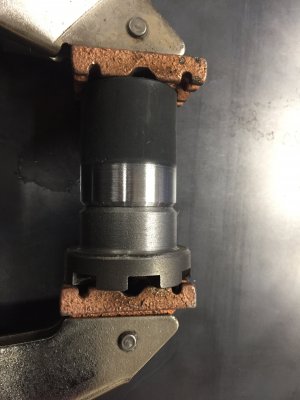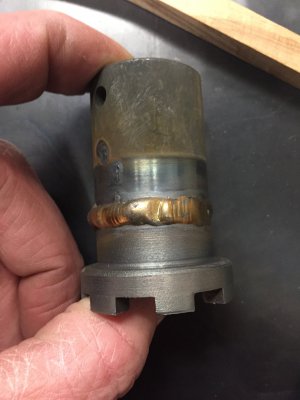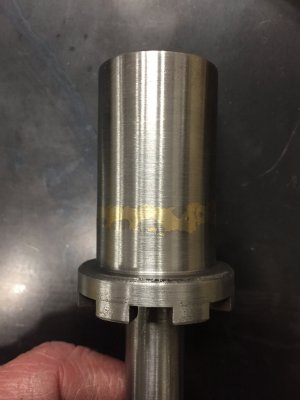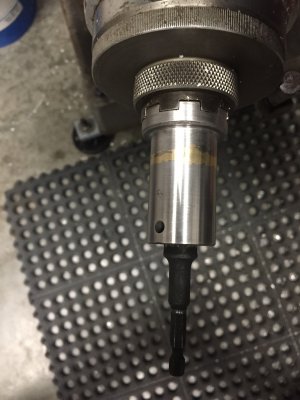Gave the TIG brazing a try this evening, and I think it’s going to work out. Needed to join a cast iron knee crank to a steel socket, to make a redneck power feed for the knee of my mill. After doing some research, decided to use aluminum-bronze filler and AC TIG. Had to fiddle around with the amperage a bit, and it brazeded rather nicely. Looks to have penetrated/flowed fairly well. Preheated the parts to 400F, and had the welder set at 120 Hz AC and cleaning action at 90%, with Argon at 15-20 SCFH. 3/32” tungsten and #8 cup w/gas lens. Started out at 40A, which was way too cold, as was 50A. At 60A, it was starting to puddle and flow, but it took longer than it should. 70A turned out to be just about right. Formed a puddle quickly, but if I lingered a bit too long, it would start to melt the base metal ever so slightly. Then dressed it down because A.) it looked terrible! and B.) I wanted to check for porosity and wetting action. We’ll see how it holds up. The drill motor drives the knee pretty well without feeling like it’s working it too hard.









